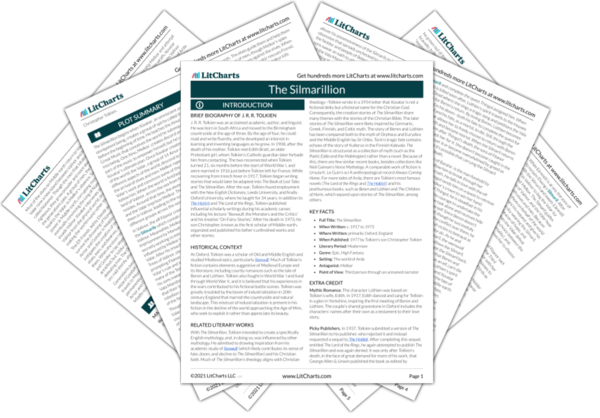The narrator claims that the elves don’t sing about Fingolfin’s death, but they clearly preserve the story in other ways. Fingolfin is one of the great heroes of elvish history, strong enough to strike lasting blows against Morgoth, Arda’s greatest enemy, whose wounds never heal. Fingolfin’s seven blows remain visible on Morgoth’s body and plague him constantly, like the burns on his hands from the Silmarils.
